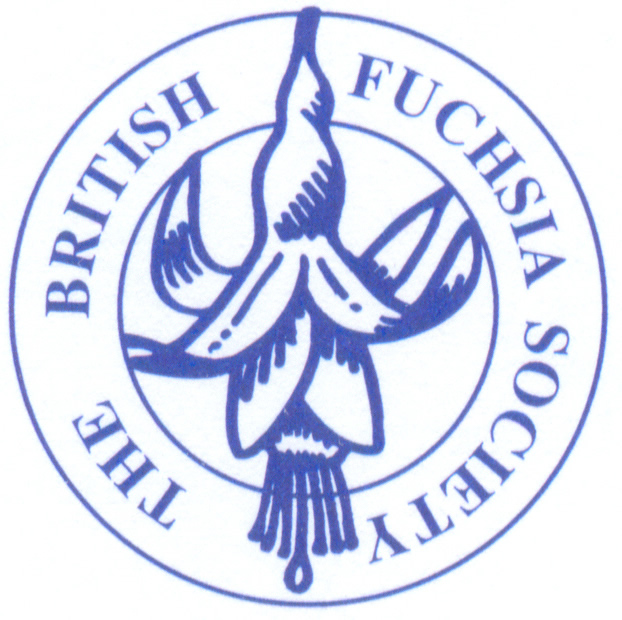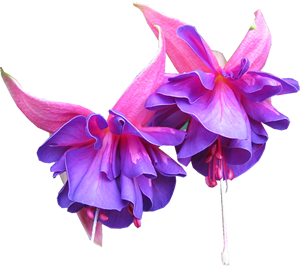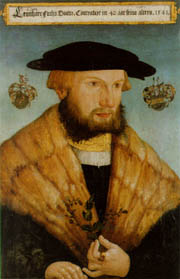
All the members of the genus, with the exception of the New Zealand species, F. excorticata, F. colensoi and F. procumbens, are natives of Central and South America - occurring in the interior of forests or in damp and shady mountainous situations. The various species differ not a little in size as well as in other characters; some, as F. verrucosa, being dwarf shrubs; others, as F. arborescens and F. apetala, attaining a height of 12 to 16 ft., and having stems several inches in diameter. Plumier, in his Nova plantarum Americanarum genera, gave a description of a species of fuchsia, the first known, under the name of Fuchsia triphylla, (lore coccineo, and a somewhat conventional outline figure of the same plant was published at Amsterdam in 1757 by Burmann.
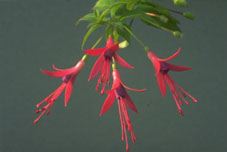
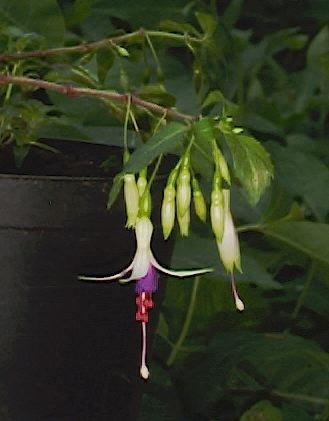
The first double varieties was recorded as Duplex amd Multiplex bred by Storey in 1850 and introduced by Vietch in Exeter. The first fuchsia with a white corolla was produced in about 1855 by Mr Storey, possibly Galanthiflora Plena?.In the the nineteenth century there were several hybridisers working in the UK, the more prolific of them including Edward Banks, J Edmund Bland, William J. Epps, J. Harrison, Edward Henderson, James Lye, W. Miller, John Salter, George Smith, John Smith, W.H. Storey and William Youell. Elsewhere in Europe, in France, Laurent Boucharlat, Victor Lemoine and Joseph Rozain and in Austria J N Twerdy.Around the turn of the century Carl Bonstedt worked in Germany producing a lot of new Triphylla hydrids
<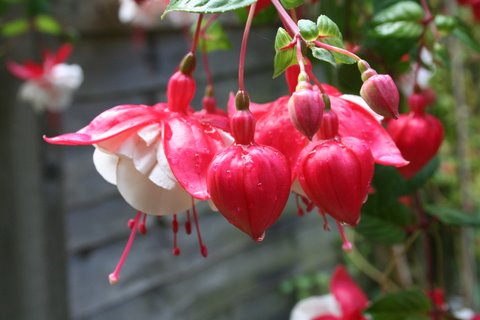
The hybridisation continued in the early 20th century, though it was interupted by the first and second world wars where much of the land and greenhouses were turned over to food production. In the 1950s and 60s, hybridisers in California focused on producing many new fuchsia including many large double trailing varieties which are still popular today.
There appears to be very little limit to the number of forms to be obtained by careful cultivation and selection. To hybridise, the flower as soon as it opens is emasculated, and it is then fertilized with pollen a different fuchsia flower, the berry allowed to develop and ripen, the seeds extracted and sown, and the resulting fuchsias will be a new fuchsia. Modern hybrisers are employing the science of genetics to improve the outcomes. A fuchsia with a yellow corolla is still something which nobody has really achieved.
